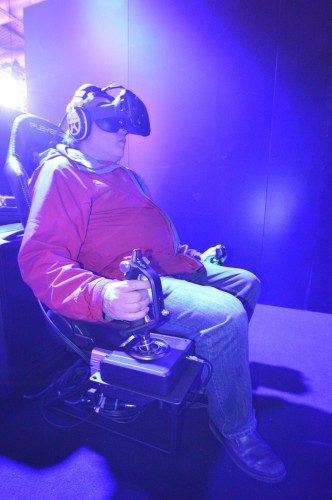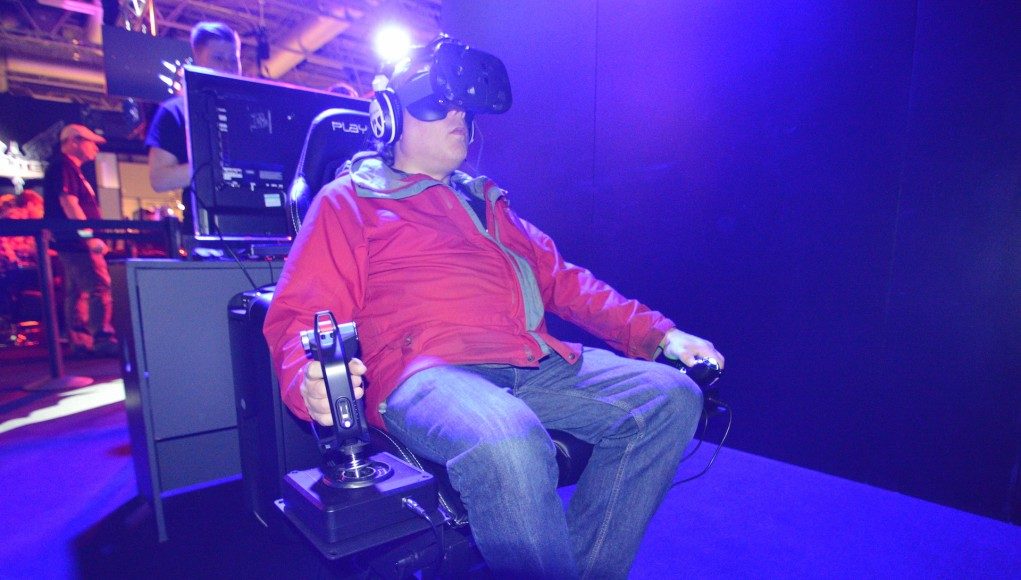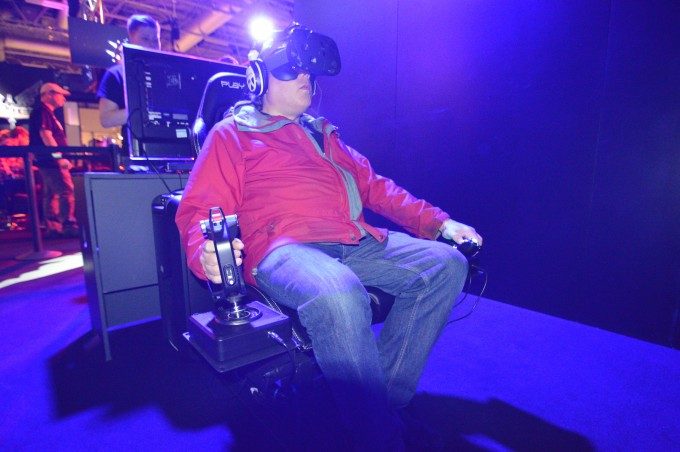EGX 2015 was seemingly over flowing with virtual reality headsets this year and interestingly, with the exception of a handful of Playstation VR demo stations, the Valve’s flagship VR Headset the HTC Vive dominated. A nice surprise too, Elite: Dangerous being publicly demo’d on SteamVR’s first headset. We went hands-on.
Elite: Dangerous is a member of the ‘old guard’ of virtual reality integrated games who’s development and effectiveness has closely followed the rapid evolution of VR hardware. From the DK1 days to present, Frontier Developments, the studio behind E:D, have consistently set the bar and example for good virtual reality design in games.
At this year’s EGX at Birmingham’s NEC, Elite:Dangerous was yet again prominent and was proudly ushering attendees through a demo of the latest build of the game, housed in a virtual reality booth, complete with HOTAS controller setup and an HTC Vive plus Lighthouse tracking basestations.
I managed to snag myself a demo on this current state of the art way to play Elite and it was a pleasant upgrade from previous experiences.
I was one of the first the UK to receive an Oculus Rift DK2 back in July of 2014 and one of the first titles I recorded a playtest for was Elite: Dangerous, which back then had to be hacked into submission to accept the brand new headset. Back then, the 1080p, OLED panel with it’s ‘infinite’ contrast levels and perfect blacks were a revelation for something like E:D whose scenery large comprises star-fields and the blackness of space.
Stepping into the HTC Vive was an interesting and useful chance to benchmark progress the display tech found in these headsets has advanced. You may be surprised to learn that Vive’s 1080×1200 per-eye resolution isn’t as big a leap as you might expect, when compared to the DK2’s 960×1080 per eye. It is better, there is more detail, but the game’s orange-on-black hues are very good at finding that screen door effect, or at least the equivalent for Pentile OLED panels such as these. As a result, perceived resolution is probably lower than it would be when displaying virtual worlds with lighter, more naturalistic hues, but those gaps between pixels are still there and still readily noticeable. It’s an incremental and noticeable difference then, but not a game changer.
 Field of view on the other hand is incrementally but noticeably improved. That feeling of being wrapped in a starship’s cockpit only occasionally ruined by wayward extreme glances to the periphery of your vision for those telltale black borders, but for the most part this does not intrude at all.
Field of view on the other hand is incrementally but noticeably improved. That feeling of being wrapped in a starship’s cockpit only occasionally ruined by wayward extreme glances to the periphery of your vision for those telltale black borders, but for the most part this does not intrude at all.
In terms of fluidity, it was a great experience – with low persistence of vision delivering silky smooth head pans and tilts, delivering the feeling of an expansive window on a world rather than a display floating in front of your face. But as a useful benchmark against the Vive’s biggest rival, in a seated more traditional gaming experience, the developer edition of the vive is almost identical to the Crescent Bay and forthcoming Consumer Oculus Rift. However, the new Rift ergonomics are much improved over the early Vive kit, which will no doubt improve.
It’s an interesting reminder that the core tech behind these headsets are very close in terms of delivering a certain level of core experience, it’s going to be down to how users move around in and interact with the world that will set these two platforms apart once they both reach retail early next year.








